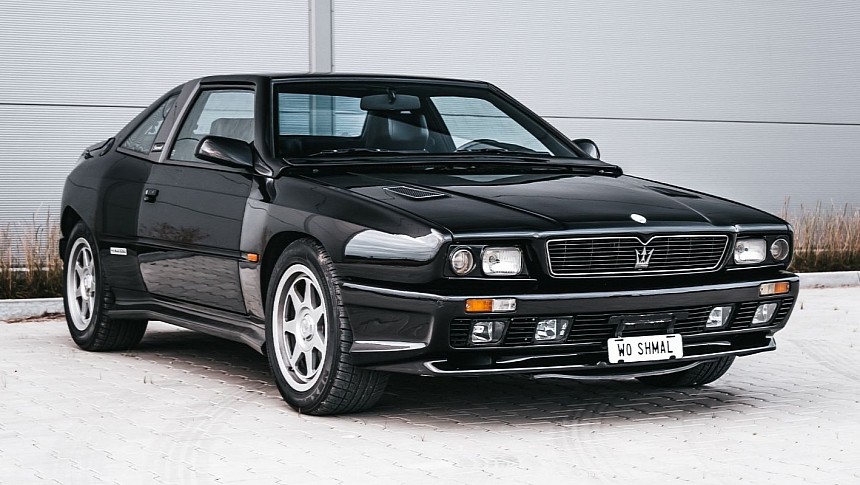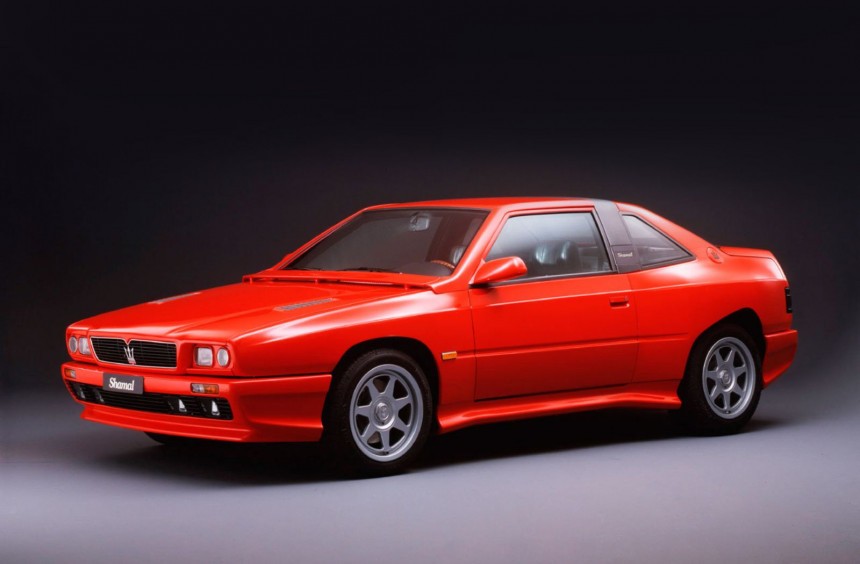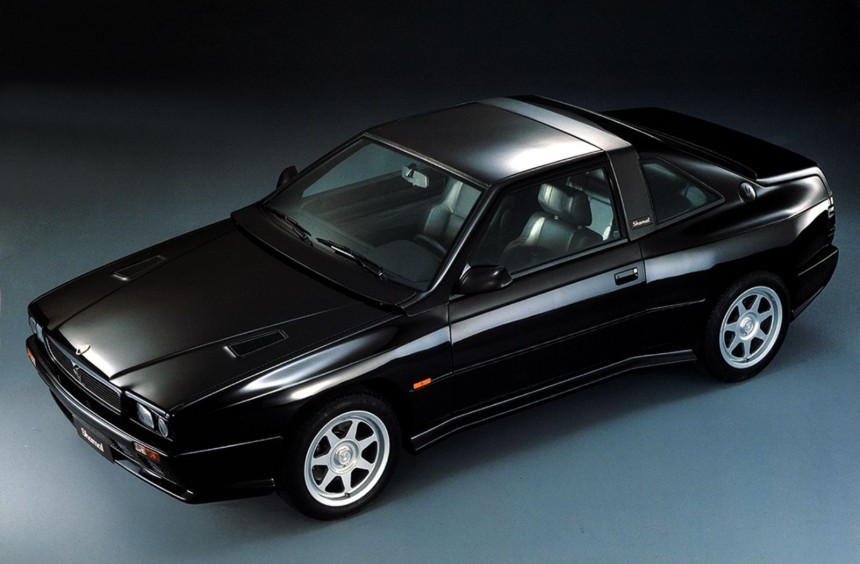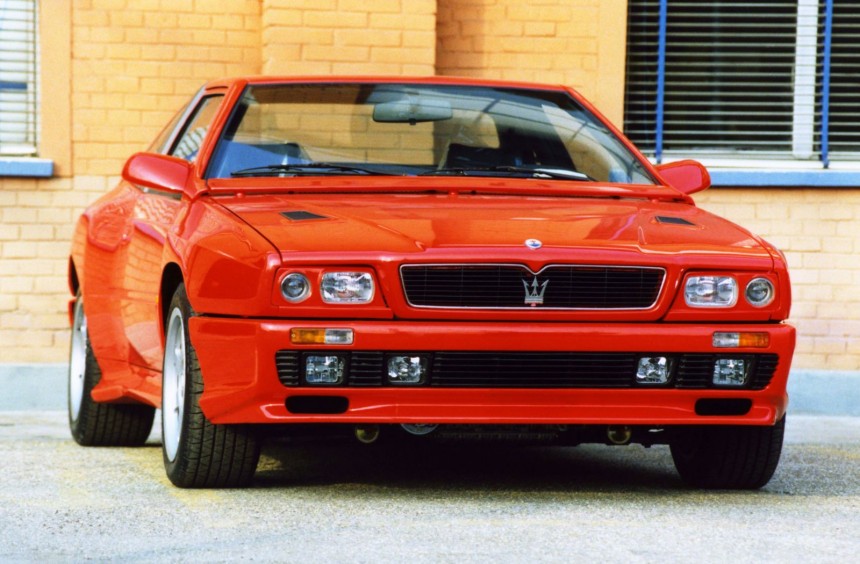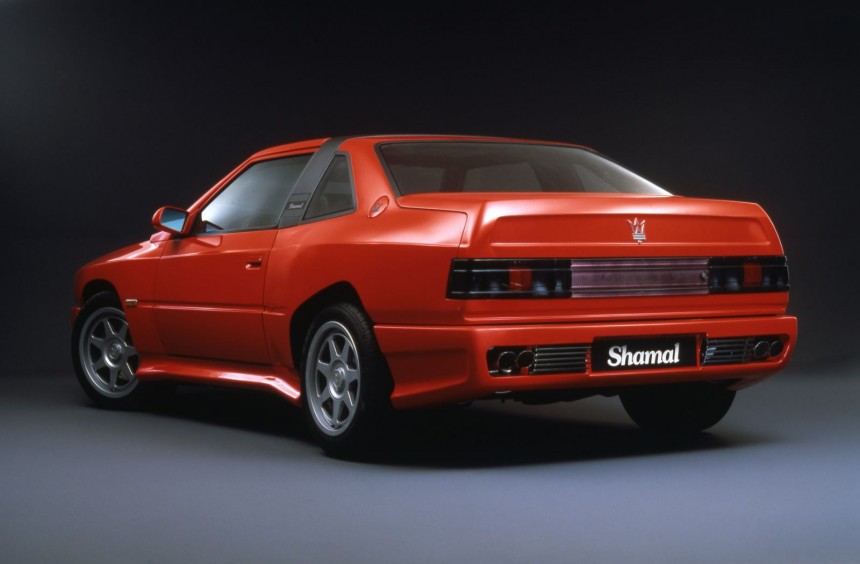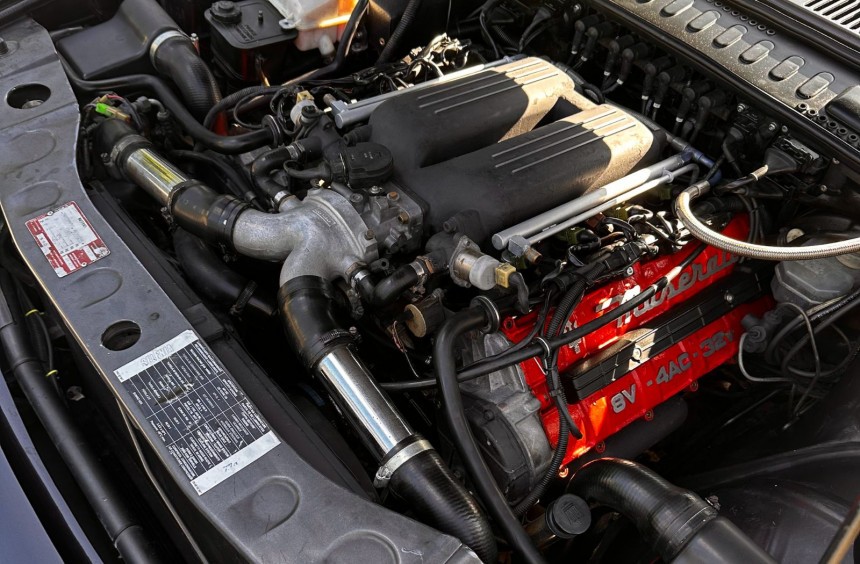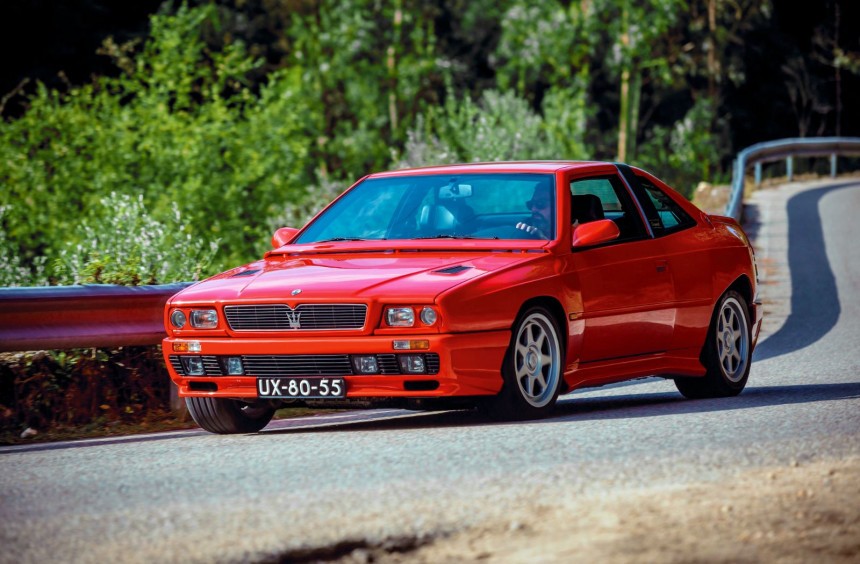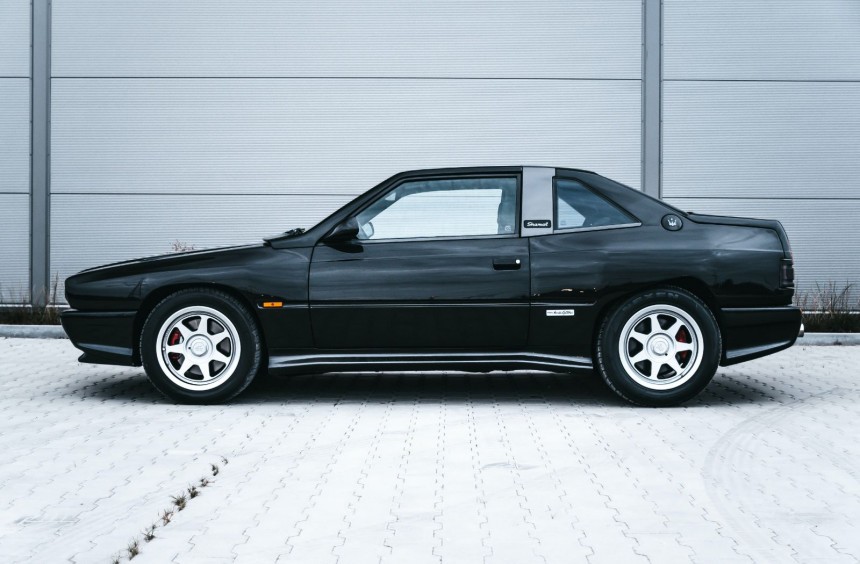While based on the forgettable, often-ridiculed Biturbo, the Shamal was a surprisingly good high-performance grand tourer that never got the credit it deserved.
Throughout its history, Maserati went through more ups and downs than any of Italy's prestigious carmakers.
But despite that, it managed to stay alive and develop a series of memorable race and road cars.
When discussing the latter category, enthusiasts and automotive historians will mention models like the 3500 GT, Ghibli, Quattroporte, or the epic, Enzo-derived MC12.
The Shamal, however, often associated with the Biturbo, unfairly gets dragged into conversations about Maserati's biggest flops by the few who remember it ever existed.
While certainly not as beautiful or successful as the icons mentioned above, this former flagship was acutally a highly-polished grand tourer that delivered a driving experience worthy of its badges.
In 1968, Maserati was saved from an imminent demise by French manufacturer Citroën, and the future looked bright once again.
Unfortunately, that didn't last long as the 1973 oil crisis ravaged Citroën and, consequently, Maserati.
The new savior became Alejandro de Tomaso, who, thanks to the success of its namesake company, had the funds to purchase Maserati and make it profitable.
The Argentine businessman's revitalization plan included the development of a new, more affordable model aimed at delivering an Italian grand tourer to a wider audience.
Called Biturbo, the new model initially sold well, but much-publicized reliability and build quality issues of early-production examples transformed it from savior to executioner.
While the company went to great lengths to eliminate those issues and continually improve the Biturbo over the next decade, the model failed to become a marketing success.
Quite the opposite, it buried Maserati in debt, which eventually led to a takeover by Fiat.
But, before selling the majority stake, de Tomaso made one last attempt to revive public interest in the struggling brand by launching a "new" flagship grand tourer.
Named after a northwesterly wind that blows over Iraq and the Persian Gulf, the Shamal was not quite new.
With limited resources, the Modena-based carmaker couldn't afford to build a completely new car, so de Tomaso hired Marcello Gandini to transform the Biturbo into one.
The legendary designer responsible for the Lancia Stratos, Lamborghini Countach, and the Diablo prototype had also just helped with the facelift of the Biturbo.
However, for the Shamal, Gandini took the sedate body of the Biturbo to another level with a series of drastic improvements, including redesigned bumpers, skirts, fenders, headlights, Countach-inspired rear wheel wells, and an innovative windshield spoiler created to improve airflow.
Moreover, the stylist improved torsional rigidity by designing a beefy integrated Targa-style roll bar. Painted black, the roll bar also acted as a styling element that stood out, especially when the Shamal was painted red.
Inside, the Shamal shared several components with the Biturbo, but it received new Recaro bucket seats and much more leather upholstery. Furthermore, genuine burled elm trim panels, steering wheel rim, parking brake handle, and shift knob were optionally available.
Though it wasn't the most beautiful grand tourer ever built by Maserati, the Shamal looked far more aggressive and modern than a standard Biturbo coupe.
While the similarities were evident, the Maserati claimed that the flagship's reworked body shared nothing but the doors with the Biturbo coupe. All other exterior components were either new or slightly modified.
The Shamal was based on the shortened Biturbo chassis that underpinned the Zagato-bodied Spyder and the luxurious Karif couple. Consequently, its chassis shared significantly more chassis components than body panels with its plebian sibling.
Nevertheless, the grand tourer received two unique assemblies.
The first was the active, height-adjustable suspension system developed in collaboration with Koni. Fully electronic, the system could automatically control adjustment and allowed the driver to choose between four stiffness settings.
The second unique assembly was the powertrain. While all versions of the Biturbo, as well as the Spyder and Karif, hid a twin-turbo SOHC V6 under the hood, the Shamal was powered by a twin-turbo DOHC V8.
New but not really, the all-aluminum 3.2 liter was conceived by adding one more cylinder to each bank of the existing Maserati V6.
With reworked DOHC 16-valve heads, electronic fuel injection, and liquid-cooled IHI turbochargers praised for minimal lag (for the era), the V8 produced 322 hp and 318 lb-ft (431 Nm) of twist.
Peak torque came as low as 2,800 RPM and was delivered to the rear wheels through a Getrag 560G six-speed manual (also used in the BMW 850CSi ) and a limited-slip differential.
With its new engine, the Shamal wasn't just a strong performer but also the third production car to feature a twin-turbo V8, after the Ferrari 288 GTO and F40.
Thanks to the potent twin-turbo V8, the Shamal could reach 62 mph (100 kph) from a standstill in 5.3 seconds, while top speed was electronically limited to 168 mph (270 kph).
Apart from being one of the quickest grand tourers on the market when it was introduced, the new Maserati flagship was also one of the most thrilling to drive.
Its suspension system made it responsive and agile on either a winding road, a straight highway, or a closed, technical track, while its V8 delivered smooth, constant, and near-lag-free power throughout the entire rev range.
For some, the Shamal looked more like a road-legal rally car than a thoroughbred Italian grand tourer, but for those who got the chance to get behind its wheel, it felt as close to GT perfection as any of the iconic road-going Maseratis of the past.
Despite being an impressive grand tourer, the Shamal was doomed from the get-go. With a price tag of around $100,000 ($234,694 in 2024 money) and Biturbo roots, the flagship failed to attract many customers.
Though production spanned from 1990 to 1996, only 369 units left the Modena factory.
Today, the Shamal is either completely forgotten or undeservedly ridiculed by those who think it's just a V8-powered Biturbo.
Because of that, the average value for a highly original example of this rare and underrated model currently stands around the $68,000 mark, according to classic.com
Developed with next to no funds during one of the darkest times for Maserati, the Shamal miraculously evolved into a highly polished, thrilling-to-drive grand tourer that felt nothing like its dreadful sibling.
Although its styling is debatable, there's no question that Maserati Shamal deserves more respect.
For an unbiased review of this underrated modern classic, we recommend the YouTube video below by Harry's garage.
But despite that, it managed to stay alive and develop a series of memorable race and road cars.
When discussing the latter category, enthusiasts and automotive historians will mention models like the 3500 GT, Ghibli, Quattroporte, or the epic, Enzo-derived MC12.
The Shamal, however, often associated with the Biturbo, unfairly gets dragged into conversations about Maserati's biggest flops by the few who remember it ever existed.
While certainly not as beautiful or successful as the icons mentioned above, this former flagship was acutally a highly-polished grand tourer that delivered a driving experience worthy of its badges.
Biturbo roots
Unfortunately, that didn't last long as the 1973 oil crisis ravaged Citroën and, consequently, Maserati.
The new savior became Alejandro de Tomaso, who, thanks to the success of its namesake company, had the funds to purchase Maserati and make it profitable.
The Argentine businessman's revitalization plan included the development of a new, more affordable model aimed at delivering an Italian grand tourer to a wider audience.
Called Biturbo, the new model initially sold well, but much-publicized reliability and build quality issues of early-production examples transformed it from savior to executioner.
The last Maserati of the De Tomaso era
Quite the opposite, it buried Maserati in debt, which eventually led to a takeover by Fiat.
But, before selling the majority stake, de Tomaso made one last attempt to revive public interest in the struggling brand by launching a "new" flagship grand tourer.
Designed by Marcello Gandini
With limited resources, the Modena-based carmaker couldn't afford to build a completely new car, so de Tomaso hired Marcello Gandini to transform the Biturbo into one.
The legendary designer responsible for the Lancia Stratos, Lamborghini Countach, and the Diablo prototype had also just helped with the facelift of the Biturbo.
However, for the Shamal, Gandini took the sedate body of the Biturbo to another level with a series of drastic improvements, including redesigned bumpers, skirts, fenders, headlights, Countach-inspired rear wheel wells, and an innovative windshield spoiler created to improve airflow.
Moreover, the stylist improved torsional rigidity by designing a beefy integrated Targa-style roll bar. Painted black, the roll bar also acted as a styling element that stood out, especially when the Shamal was painted red.
Inside, the Shamal shared several components with the Biturbo, but it received new Recaro bucket seats and much more leather upholstery. Furthermore, genuine burled elm trim panels, steering wheel rim, parking brake handle, and shift knob were optionally available.
Not quite a parts bin special
While the similarities were evident, the Maserati claimed that the flagship's reworked body shared nothing but the doors with the Biturbo coupe. All other exterior components were either new or slightly modified.
The Shamal was based on the shortened Biturbo chassis that underpinned the Zagato-bodied Spyder and the luxurious Karif couple. Consequently, its chassis shared significantly more chassis components than body panels with its plebian sibling.
Nevertheless, the grand tourer received two unique assemblies.
The first was the active, height-adjustable suspension system developed in collaboration with Koni. Fully electronic, the system could automatically control adjustment and allowed the driver to choose between four stiffness settings.
A twin-turbo V8 pioneer
New but not really, the all-aluminum 3.2 liter was conceived by adding one more cylinder to each bank of the existing Maserati V6.
With reworked DOHC 16-valve heads, electronic fuel injection, and liquid-cooled IHI turbochargers praised for minimal lag (for the era), the V8 produced 322 hp and 318 lb-ft (431 Nm) of twist.
Peak torque came as low as 2,800 RPM and was delivered to the rear wheels through a Getrag 560G six-speed manual (also used in the BMW 850CSi ) and a limited-slip differential.
With its new engine, the Shamal wasn't just a strong performer but also the third production car to feature a twin-turbo V8, after the Ferrari 288 GTO and F40.
A thoroughbred grand tourer worthy of its badges
Apart from being one of the quickest grand tourers on the market when it was introduced, the new Maserati flagship was also one of the most thrilling to drive.
Its suspension system made it responsive and agile on either a winding road, a straight highway, or a closed, technical track, while its V8 delivered smooth, constant, and near-lag-free power throughout the entire rev range.
For some, the Shamal looked more like a road-legal rally car than a thoroughbred Italian grand tourer, but for those who got the chance to get behind its wheel, it felt as close to GT perfection as any of the iconic road-going Maseratis of the past.
The Maserati Shamal today
Though production spanned from 1990 to 1996, only 369 units left the Modena factory.
Today, the Shamal is either completely forgotten or undeservedly ridiculed by those who think it's just a V8-powered Biturbo.
Because of that, the average value for a highly original example of this rare and underrated model currently stands around the $68,000 mark, according to classic.com
Developed with next to no funds during one of the darkest times for Maserati, the Shamal miraculously evolved into a highly polished, thrilling-to-drive grand tourer that felt nothing like its dreadful sibling.
Although its styling is debatable, there's no question that Maserati Shamal deserves more respect.
For an unbiased review of this underrated modern classic, we recommend the YouTube video below by Harry's garage.
